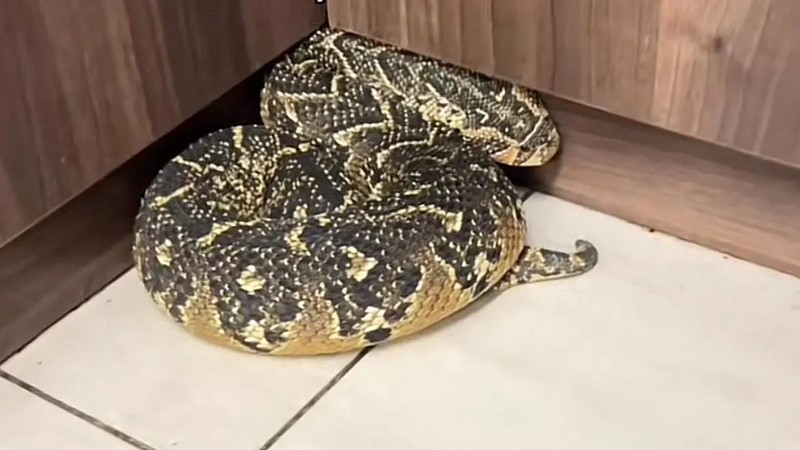As South Africa experiences warming temperatures, the likelihood of encountering snakes in homes increases.
Snake season is underway, and if you happen to find yourself face-to-face with a puff adder, knowing how to safely handle the situation is crucial.
Eduaane Niemand, a snake removal expert from Boland Snake Removers 24/7, recently took to TikTok to share valuable advice for those who may come across this venomous snake.
“What do you do when you come into your kitchen and there lies a puff adder hissing at you?” he asked in a tutorial video.
The correct response, he emphasised, is to remain calm.
@bolandsnakeremovals247 #fyipシツ #f #slangou #puffadder ♬ original sound – boland_snake_removals_24/7
Niemand demonstrated a simple yet effective technique: he placed a towel over the puff adder.
“He will just stay there,” he explained, noting how the dark confines of the towel create a sense of safety for the snake until help arrives.
“He also won’t come out because it’s nice and dark underneath the towel.”
This approach keeps both the person and the snake safe until a professional can be called in to remove the creature.
Puff adders are widespread across various regions in South Africa, thriving in habitats ranging from coastlines to grasslands and fynbos.
They can be prominently found in the Western Cape, Eastern Cape, Mpumalanga, and Gauteng, although sightings are rare in the Northern Cape and parts of the Free State.
In a recent incident in Paarl, Niemand responded to a call regarding three puff adders found on a single property – an unusual event that prompted strong reactions.
“Three venomous puff adders caught on one day on one property is crazy. But we are all happy they were caught and released in a safe environment in the mountains far from their homes,” Niemand stated.
The encountered snakes comprised one female weighing approximately 5 kg and two males weighing around 2 kg to 3 kg.
For residents in South Africa, it’s essential to recognise that puff adders typically mate in late winter and spring, with the primary mating season occurring from October to December.
This biological pattern may lead to more frequent sightings, making it essential to stay informed about how to handle these encounters safely.
